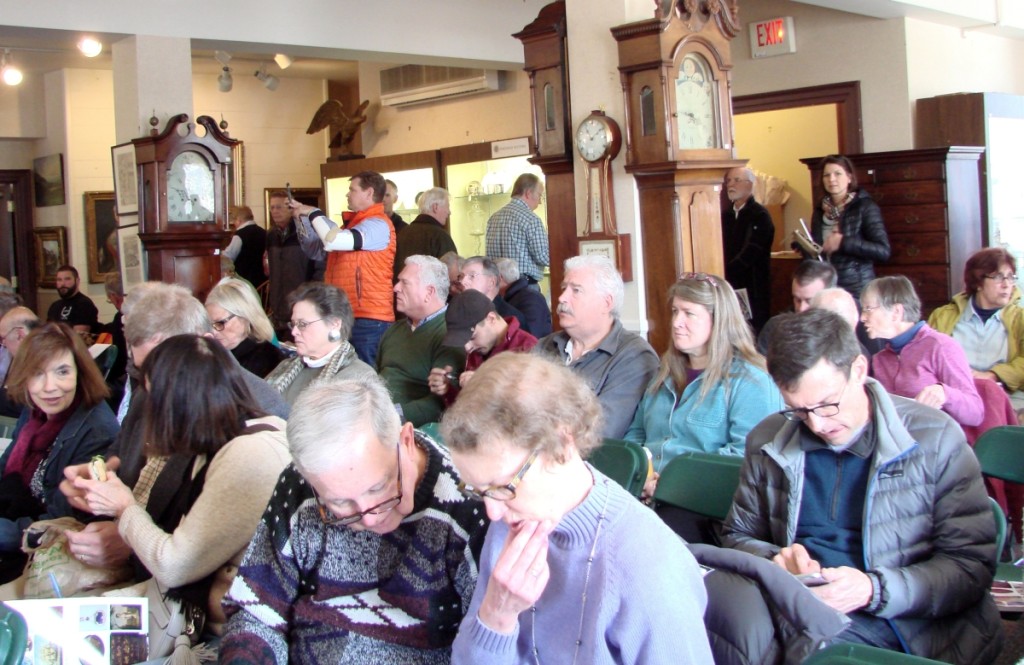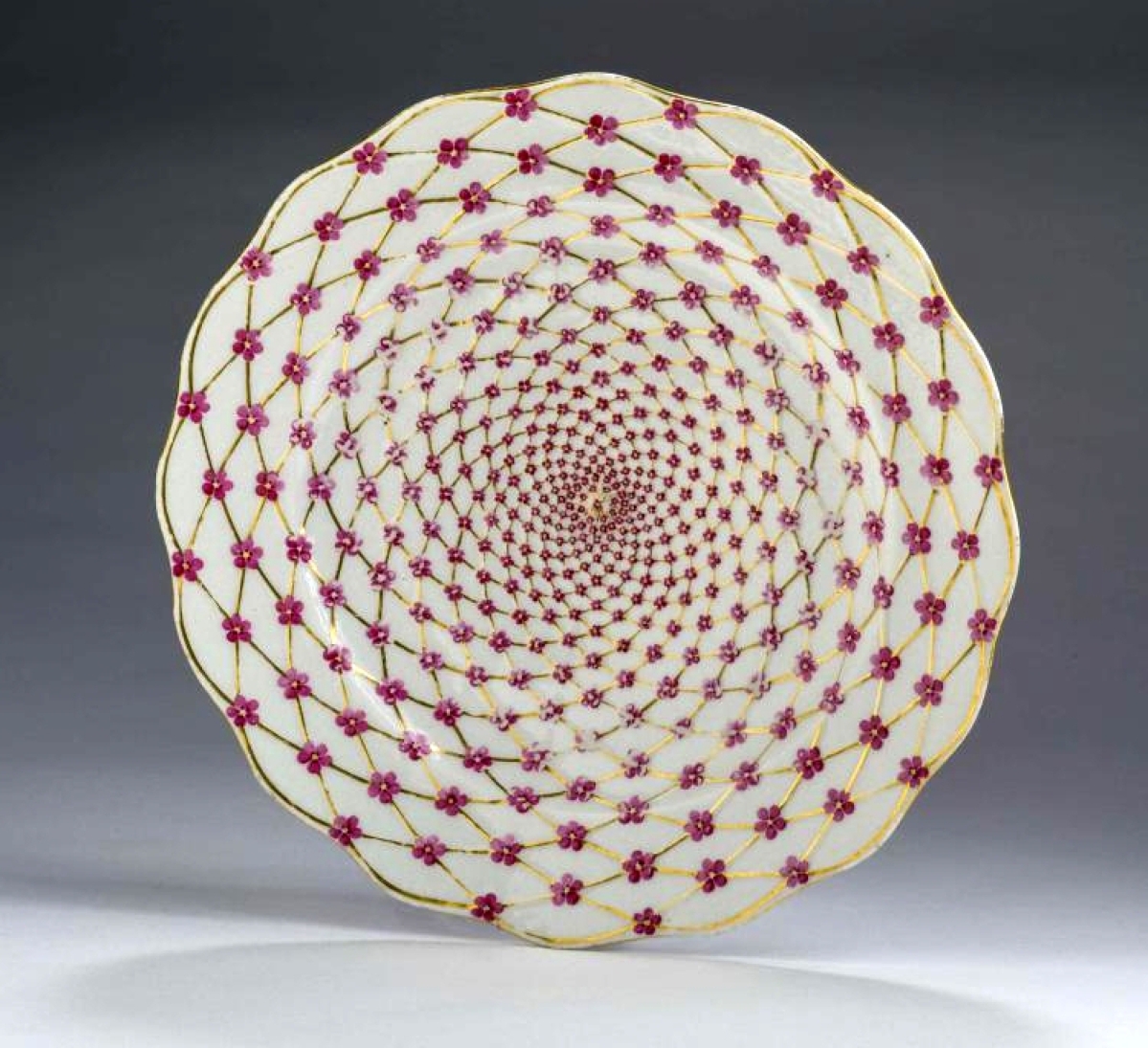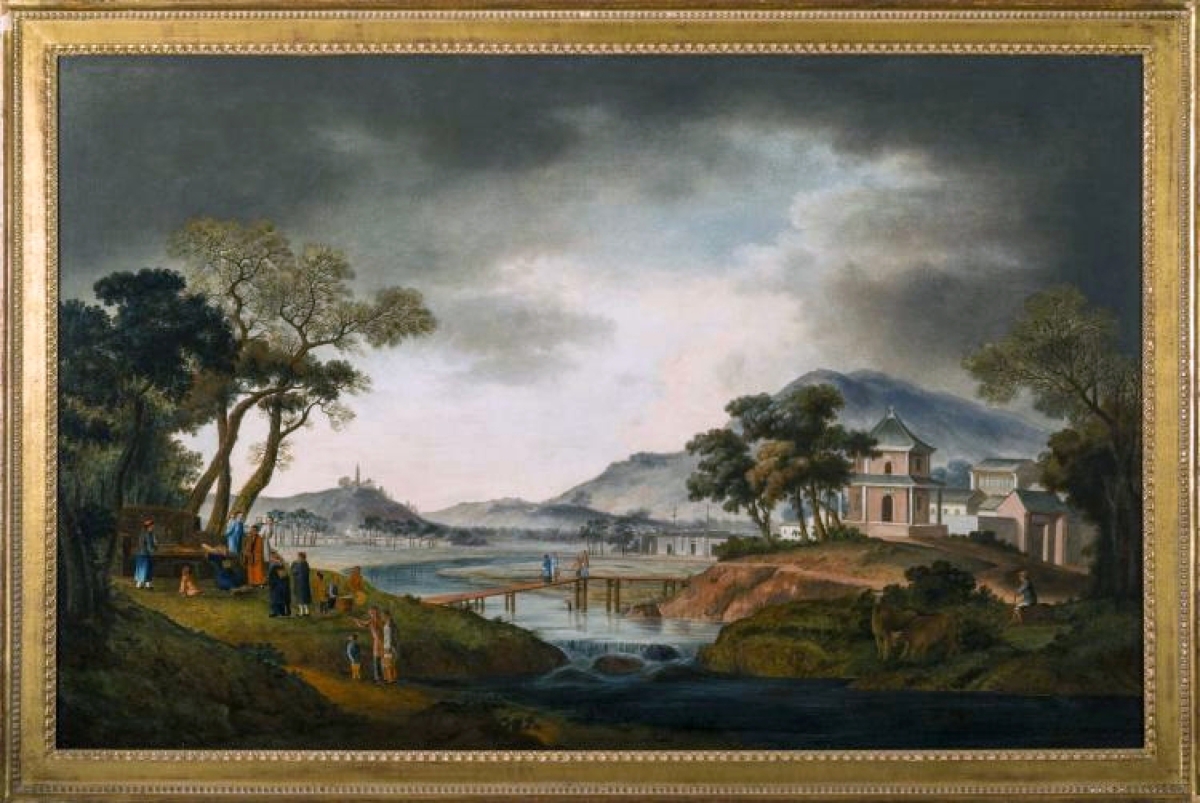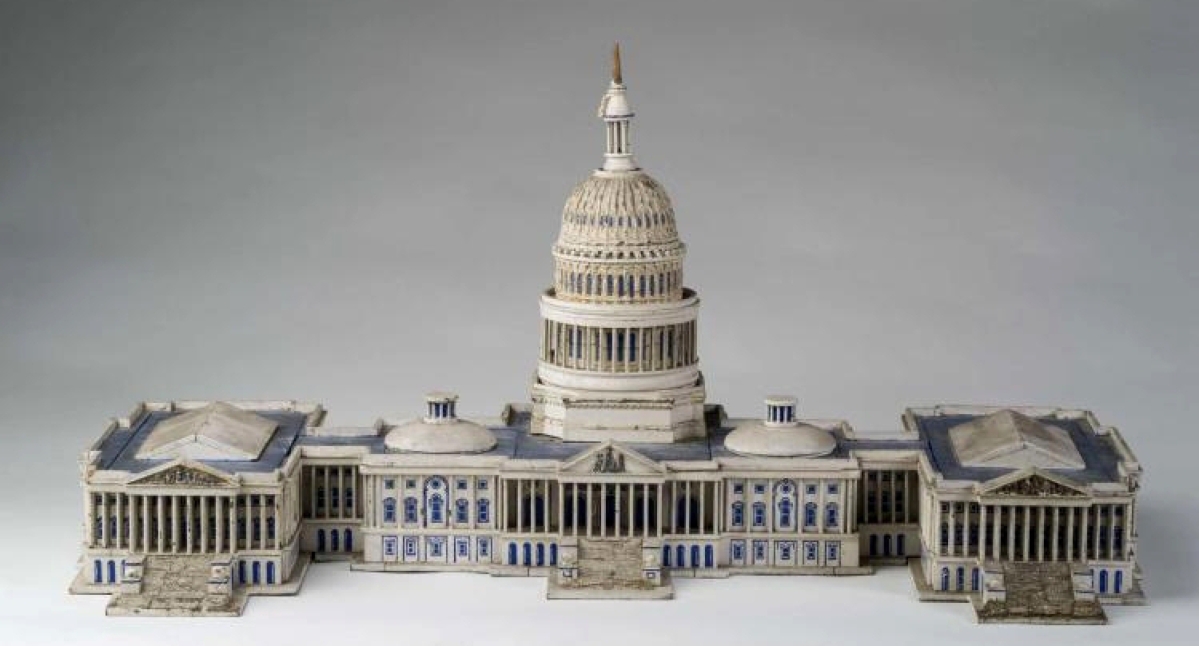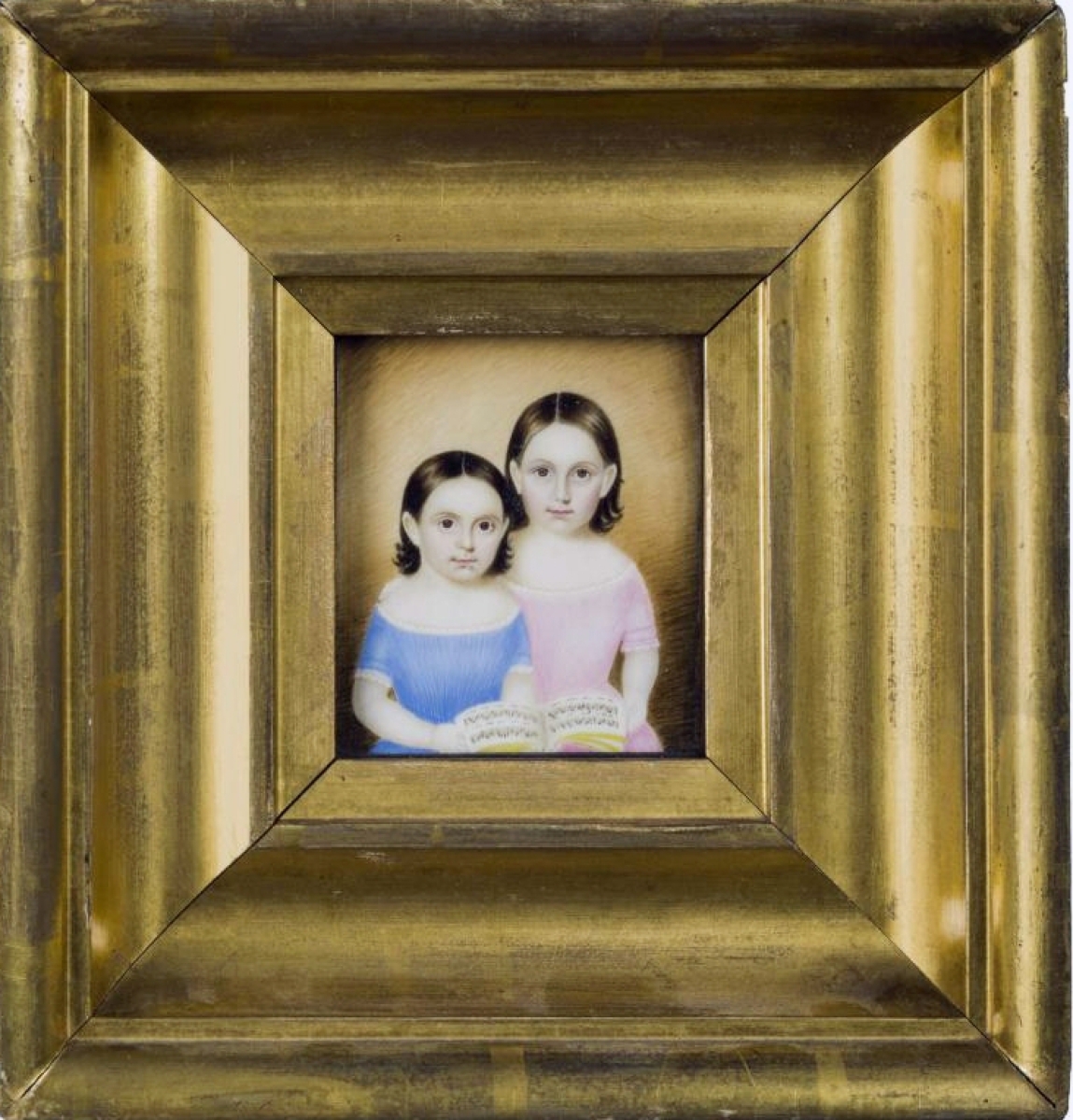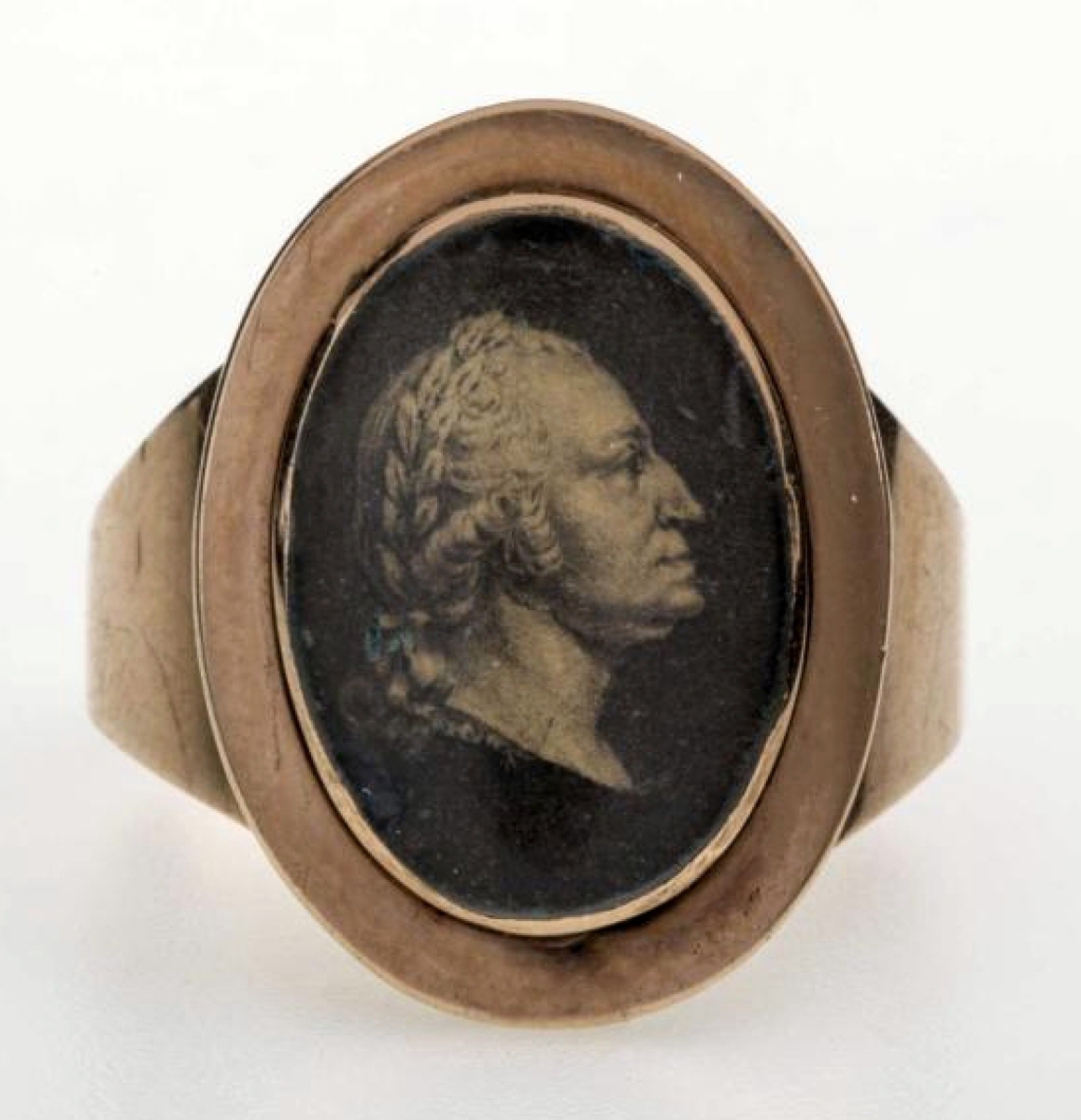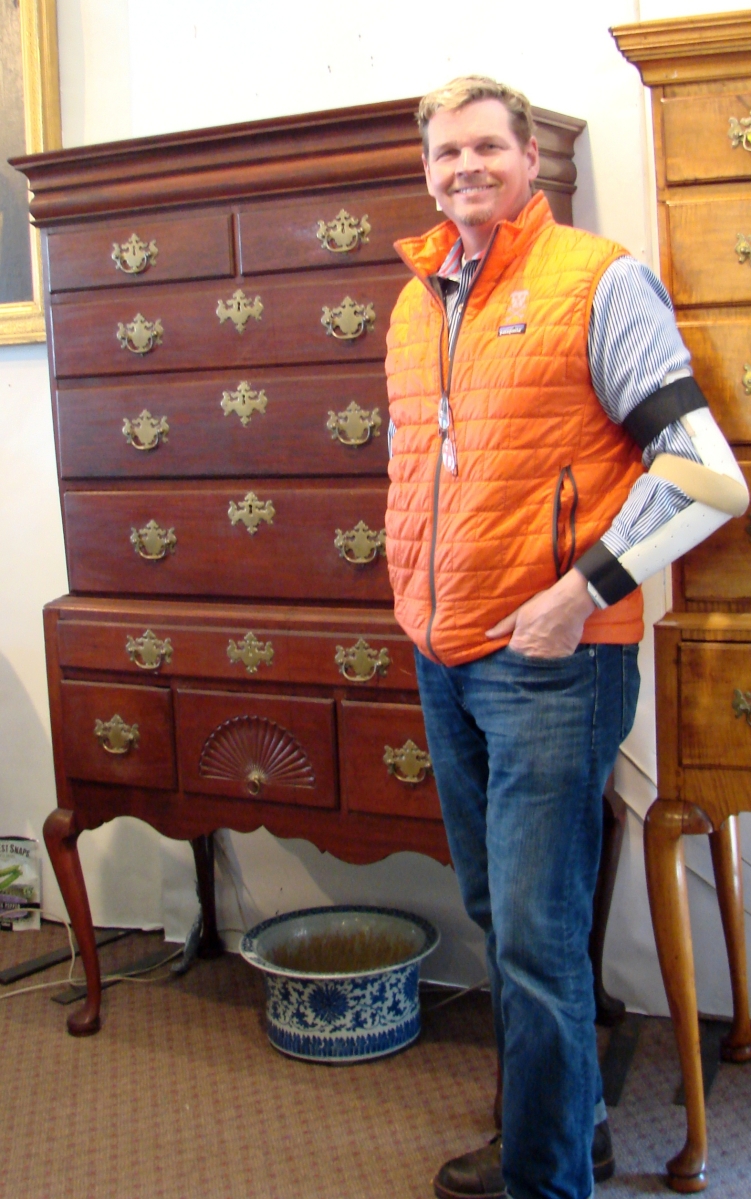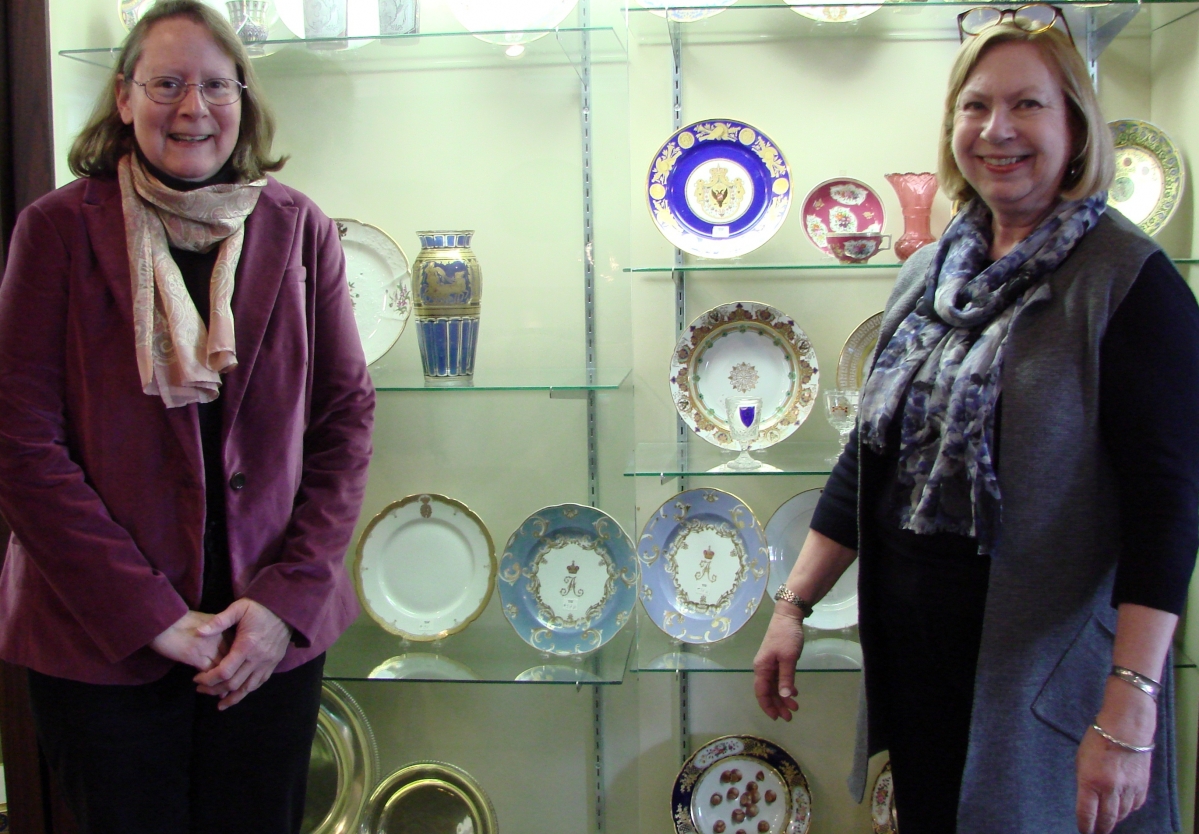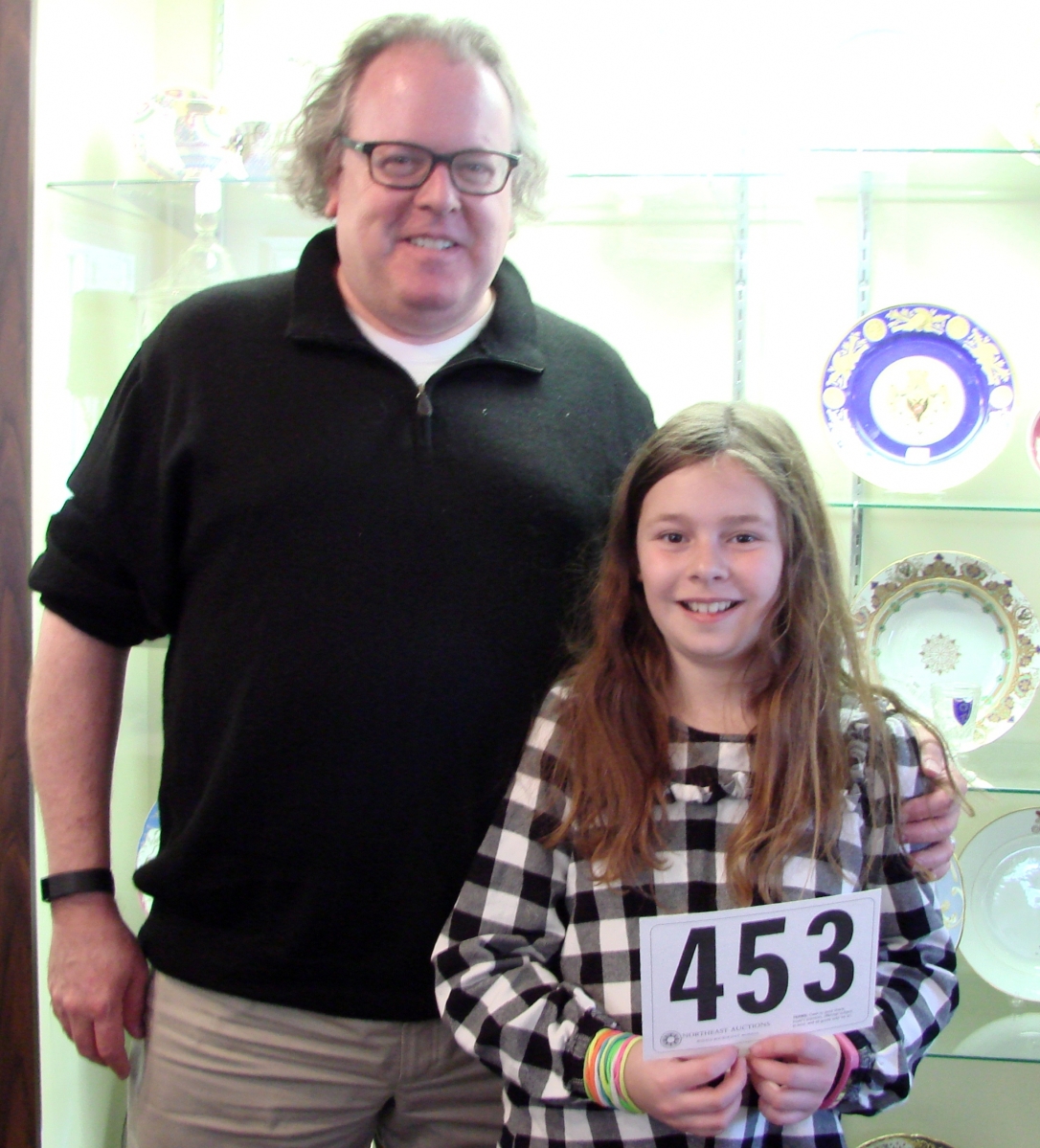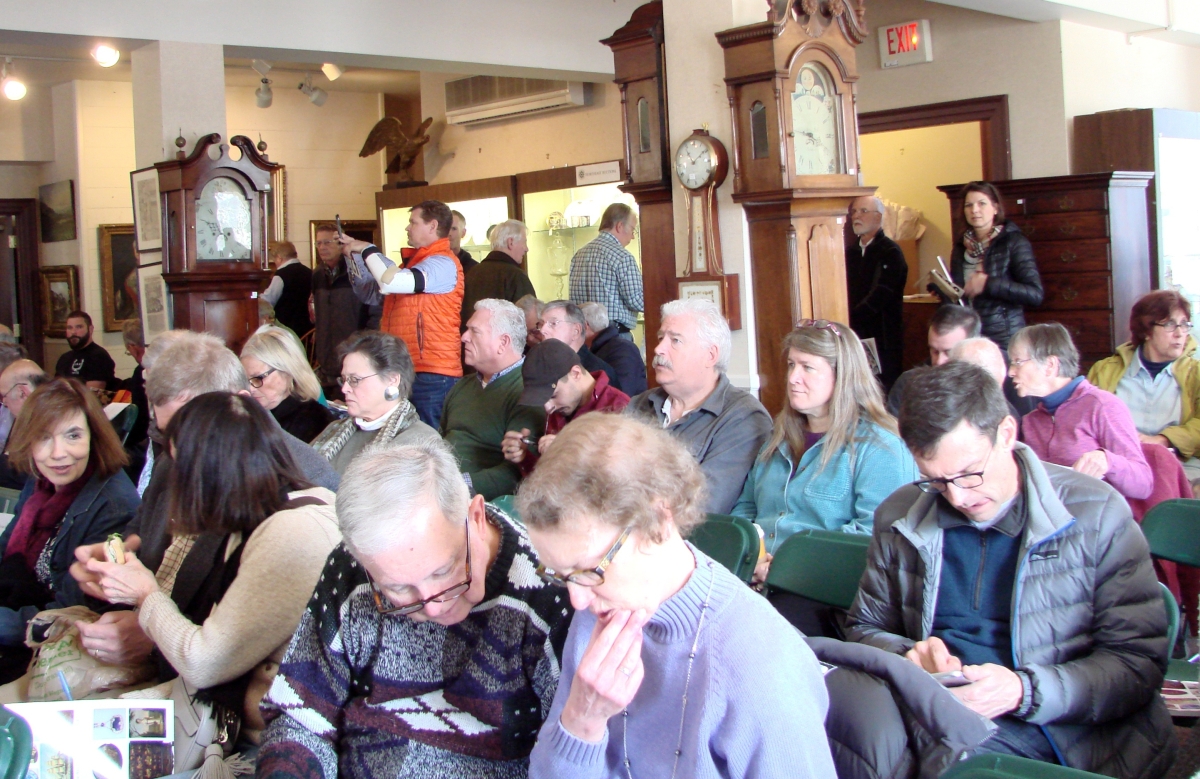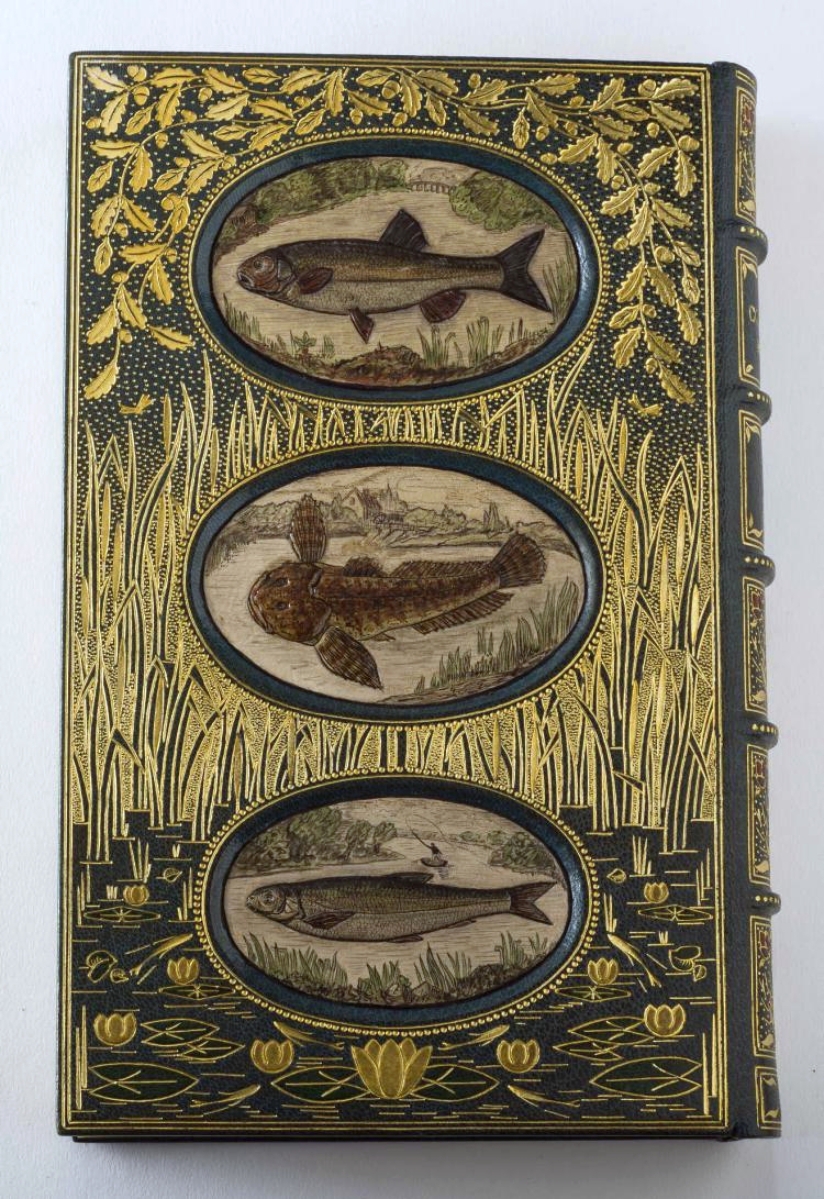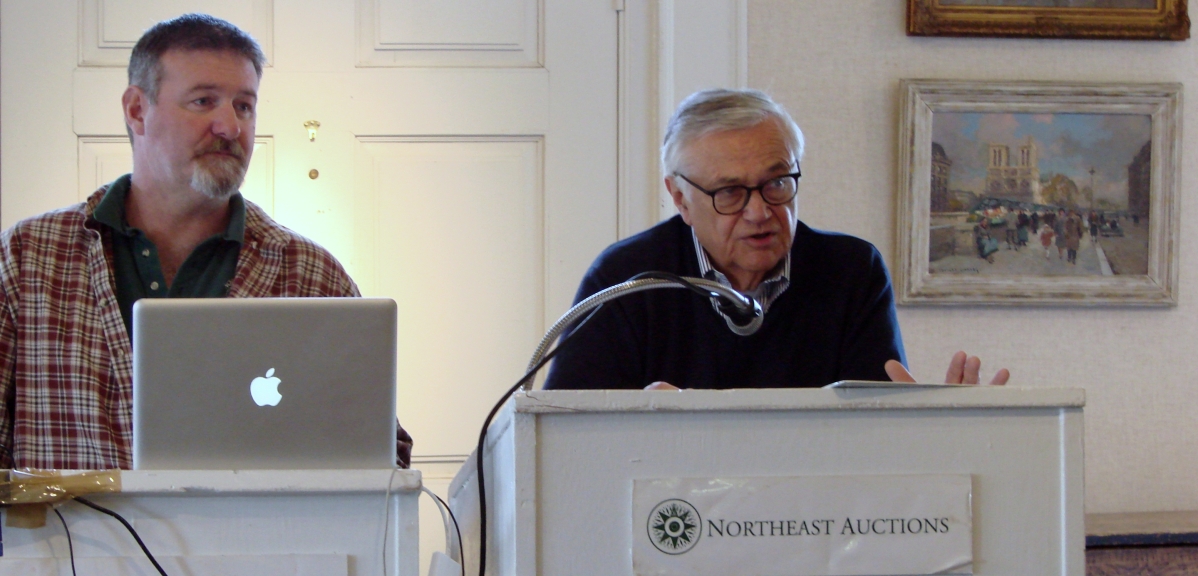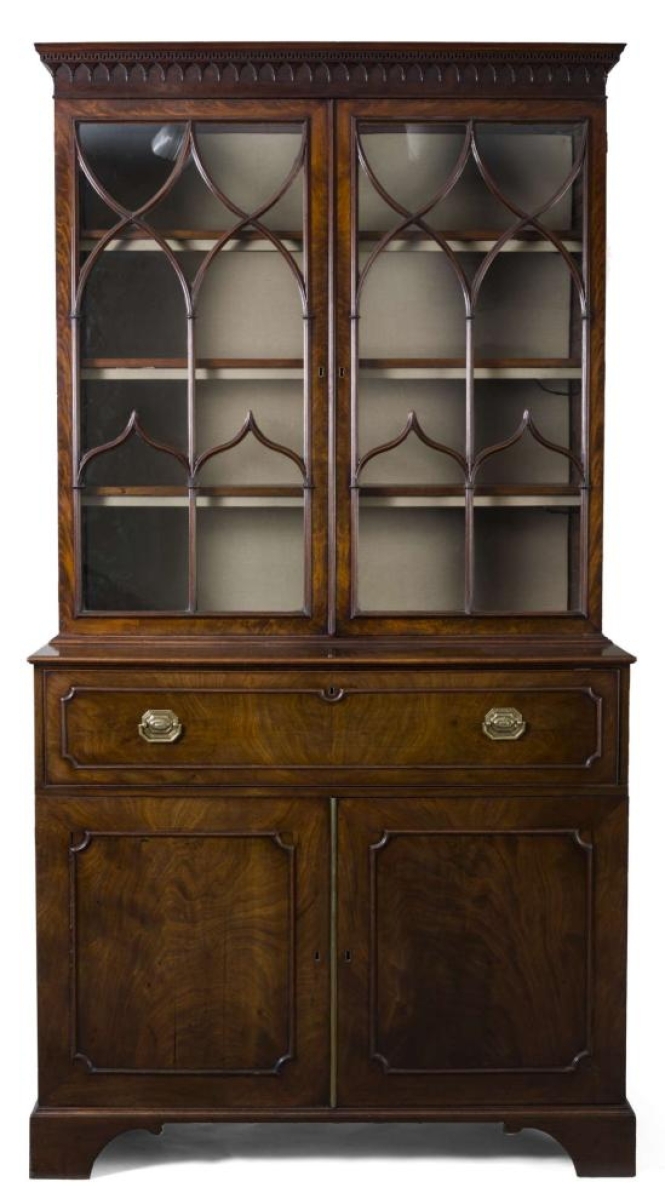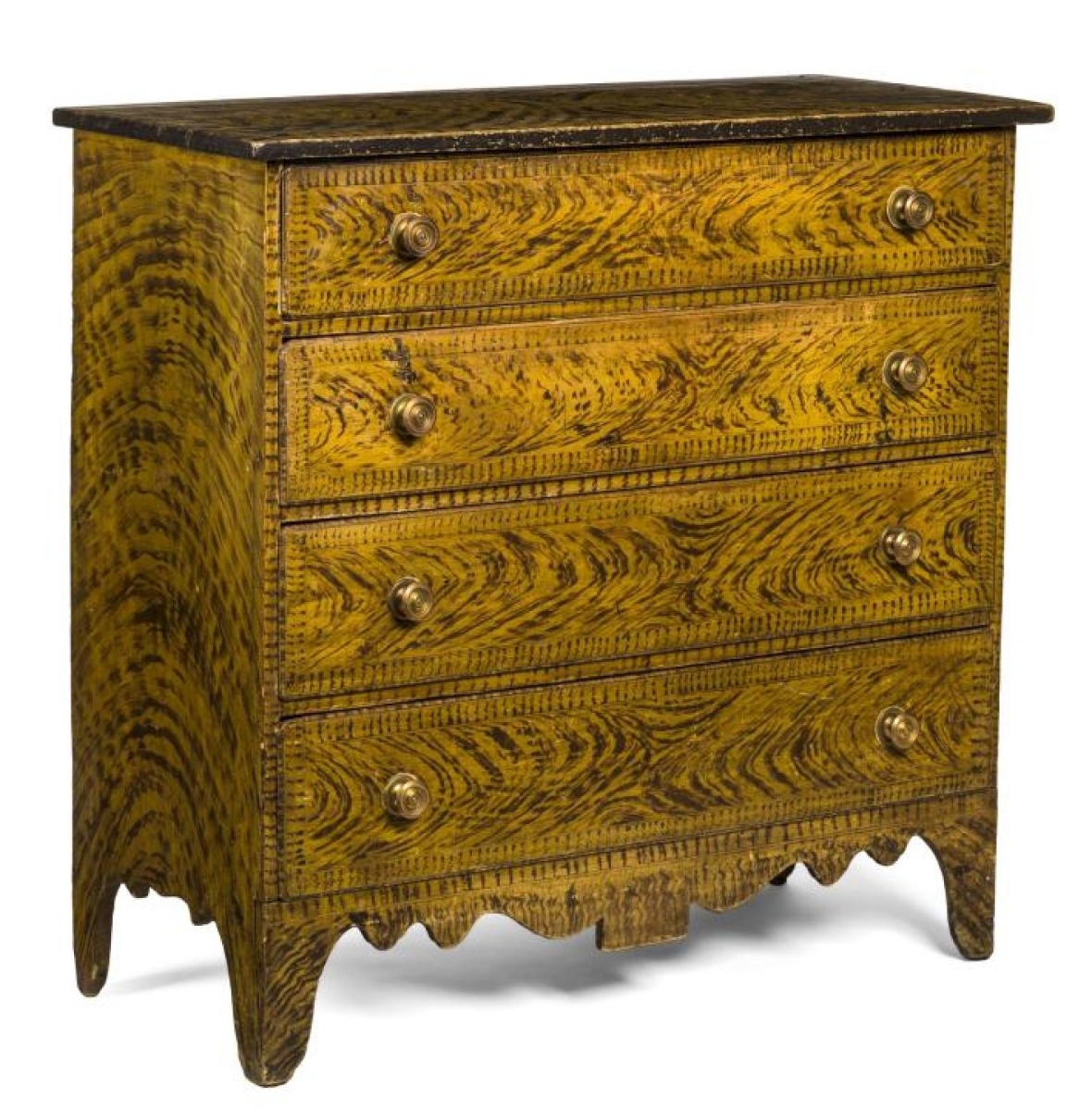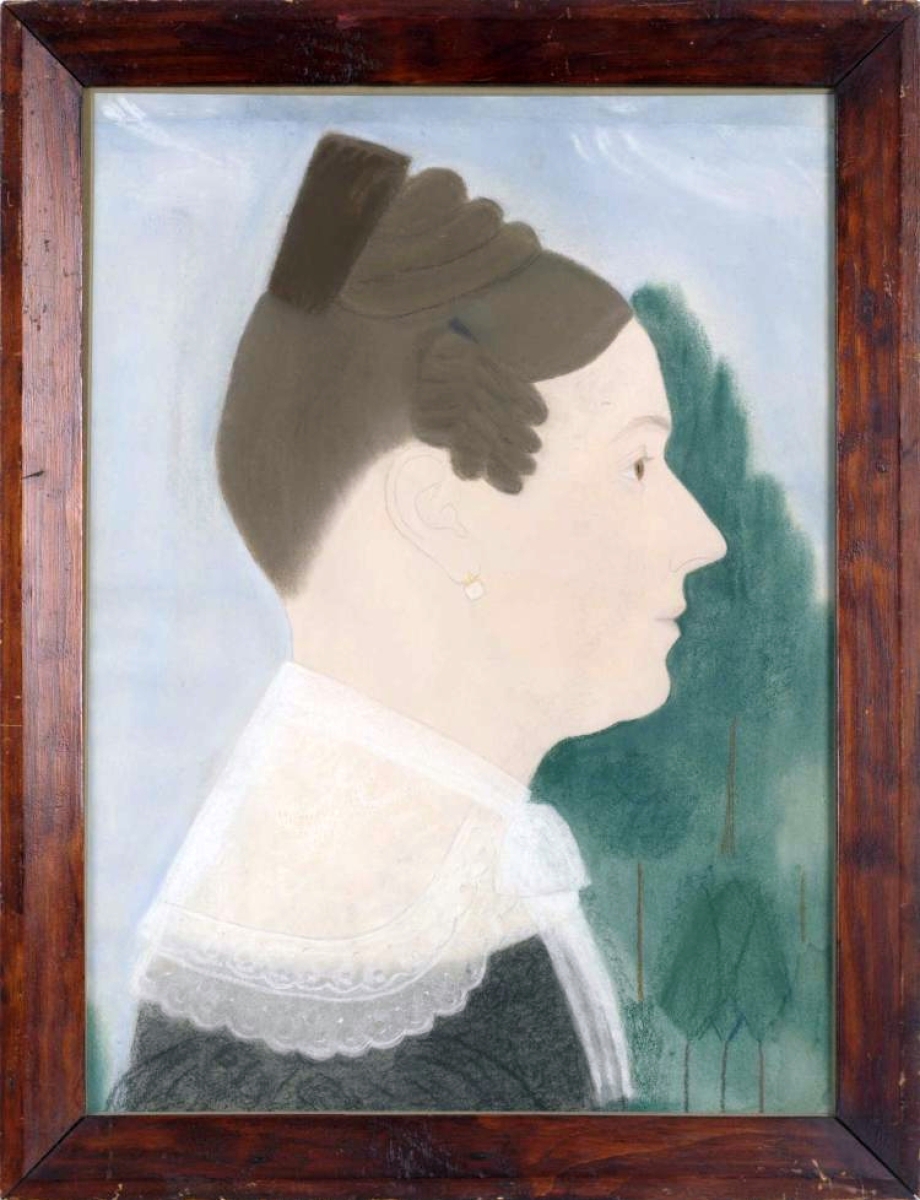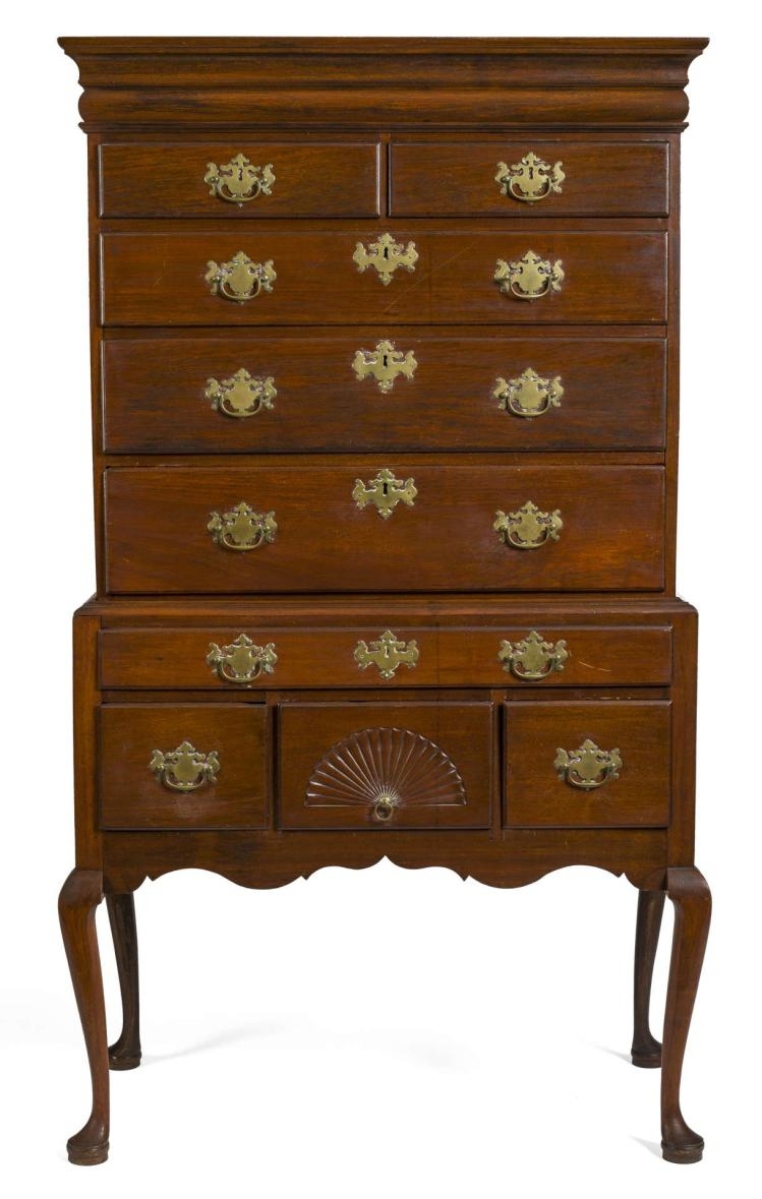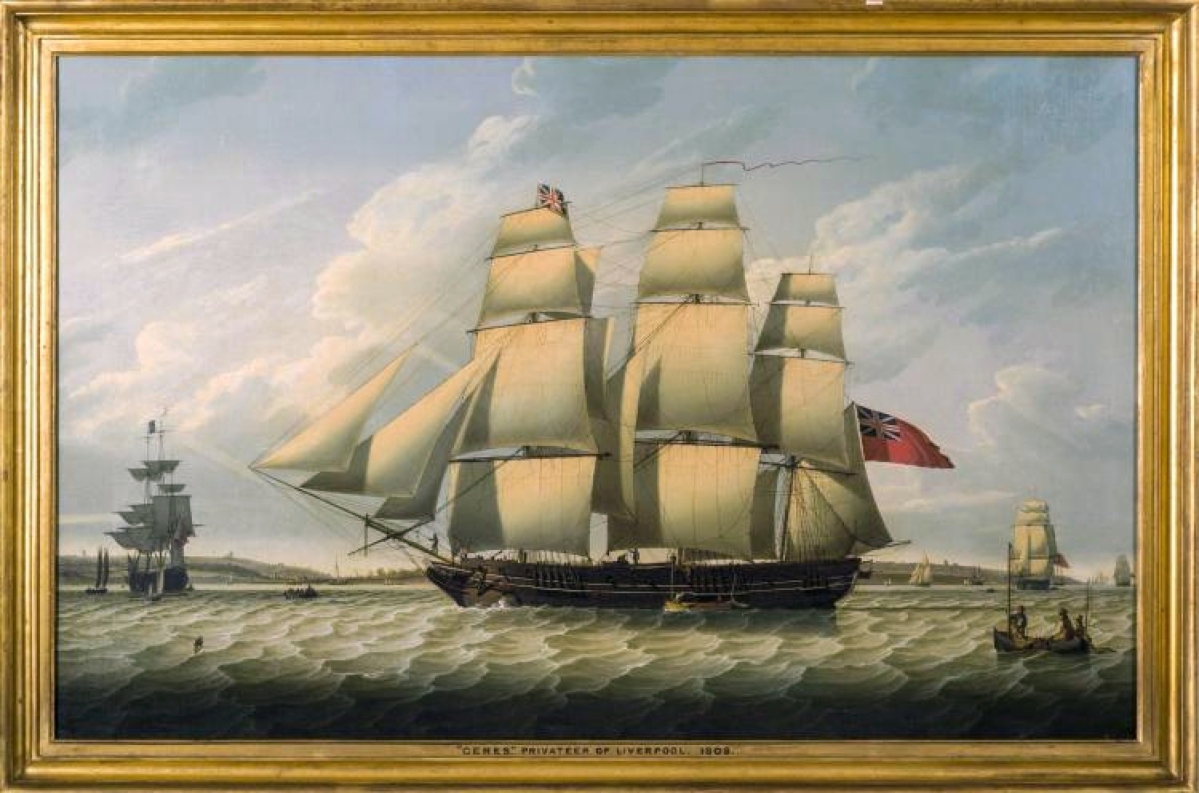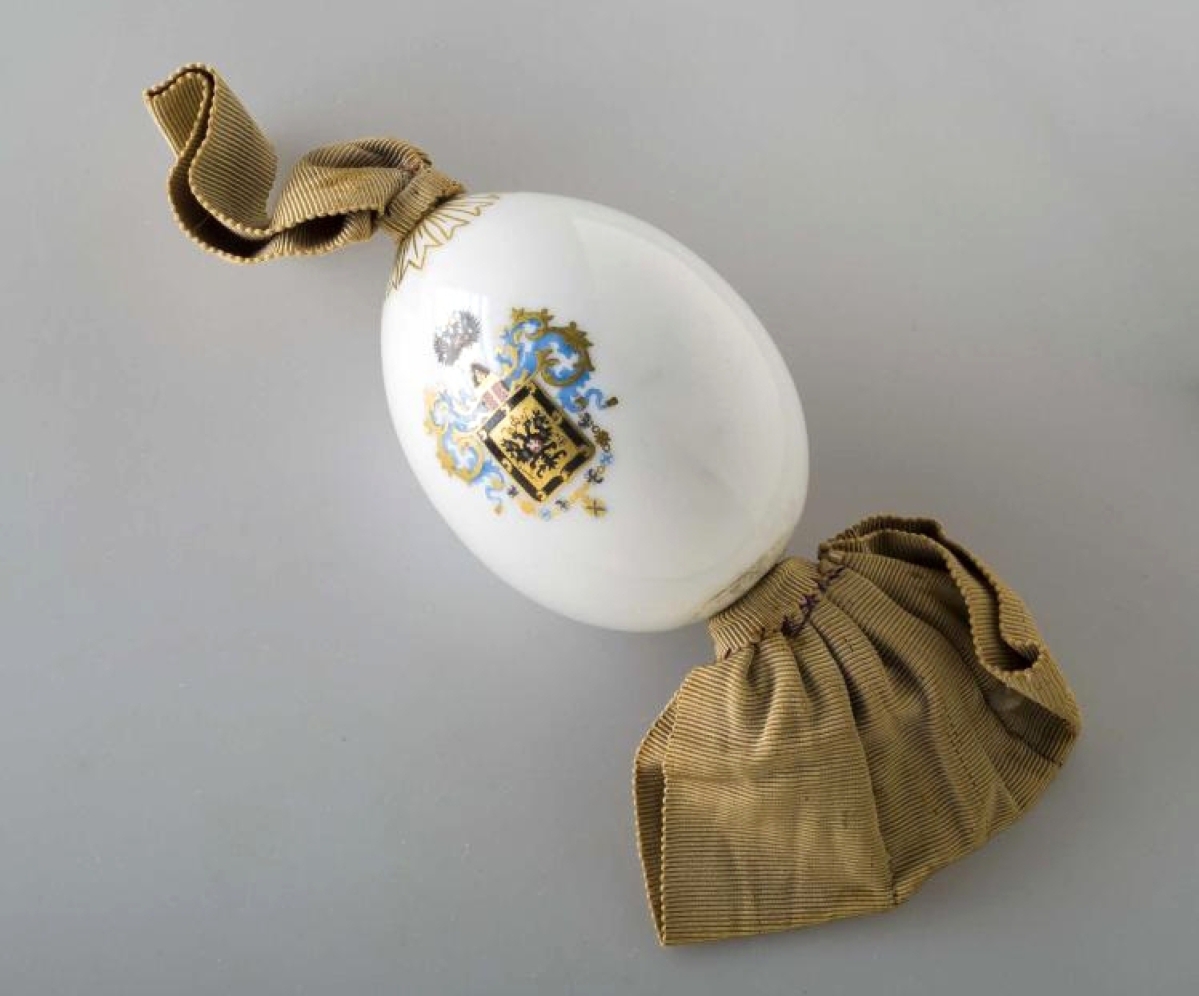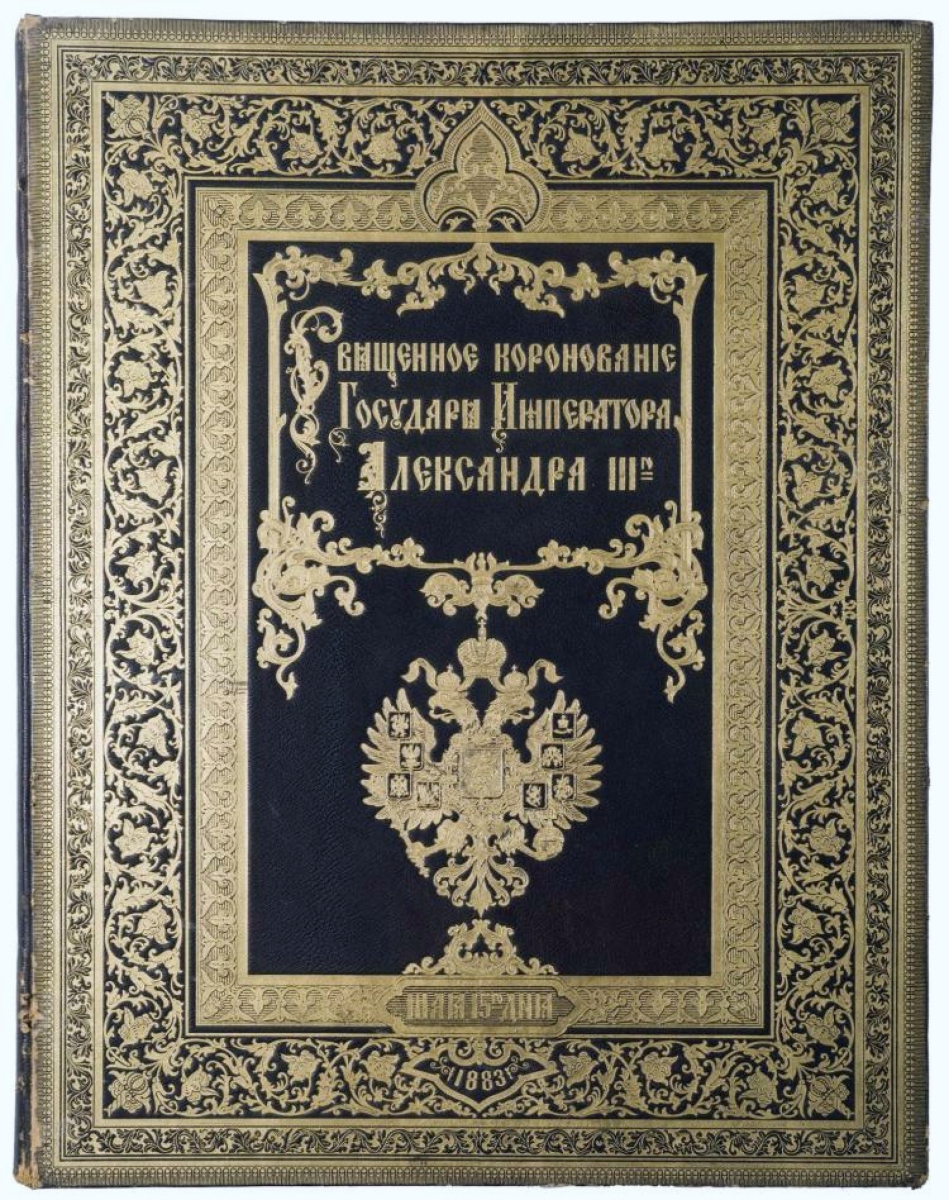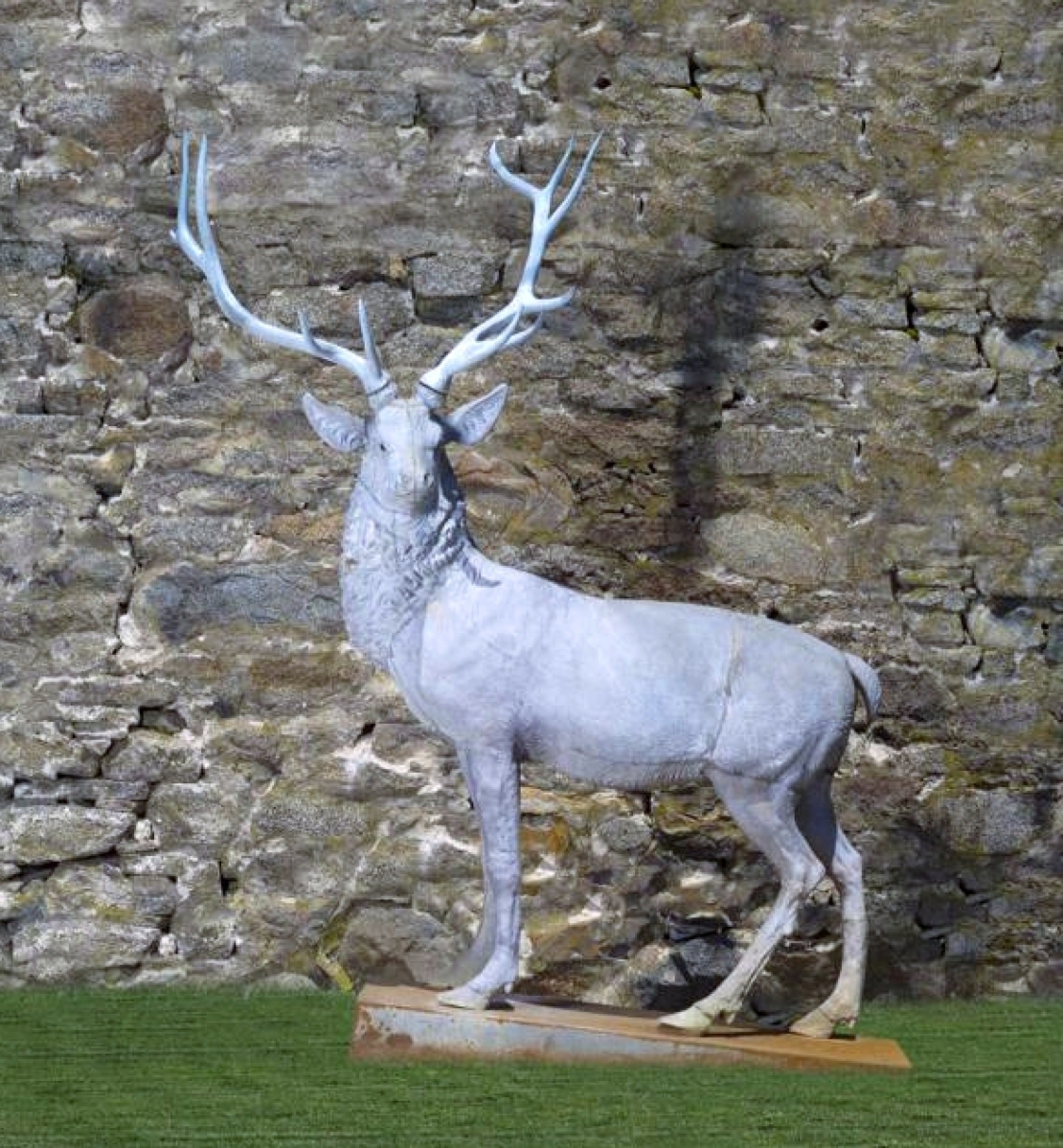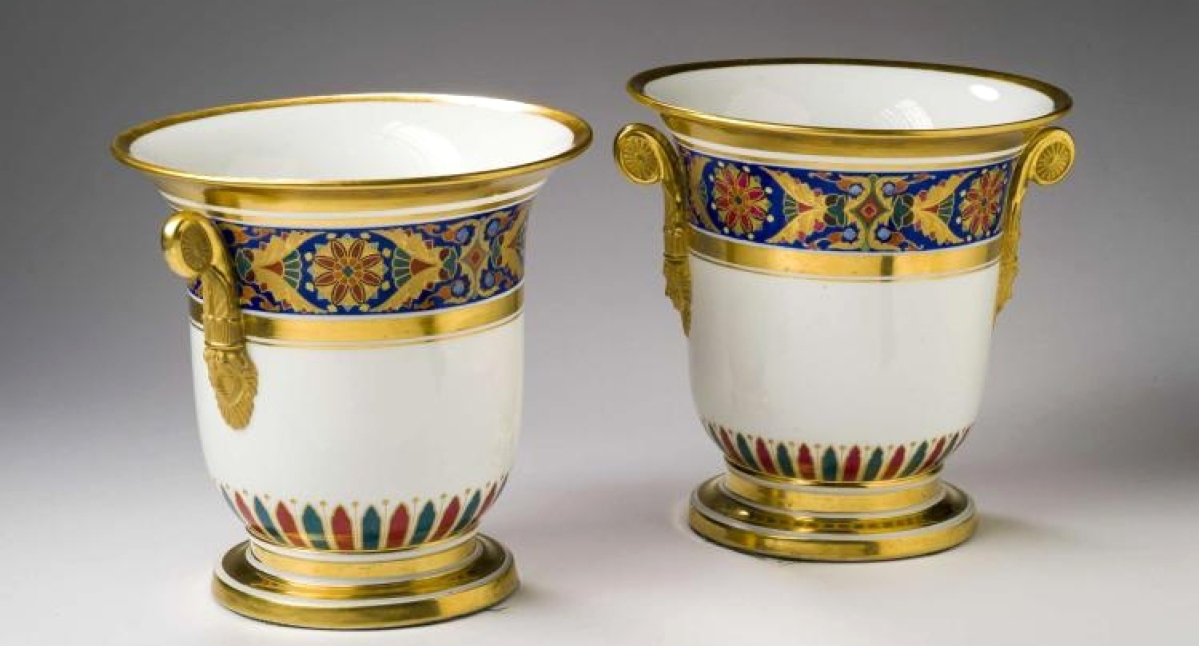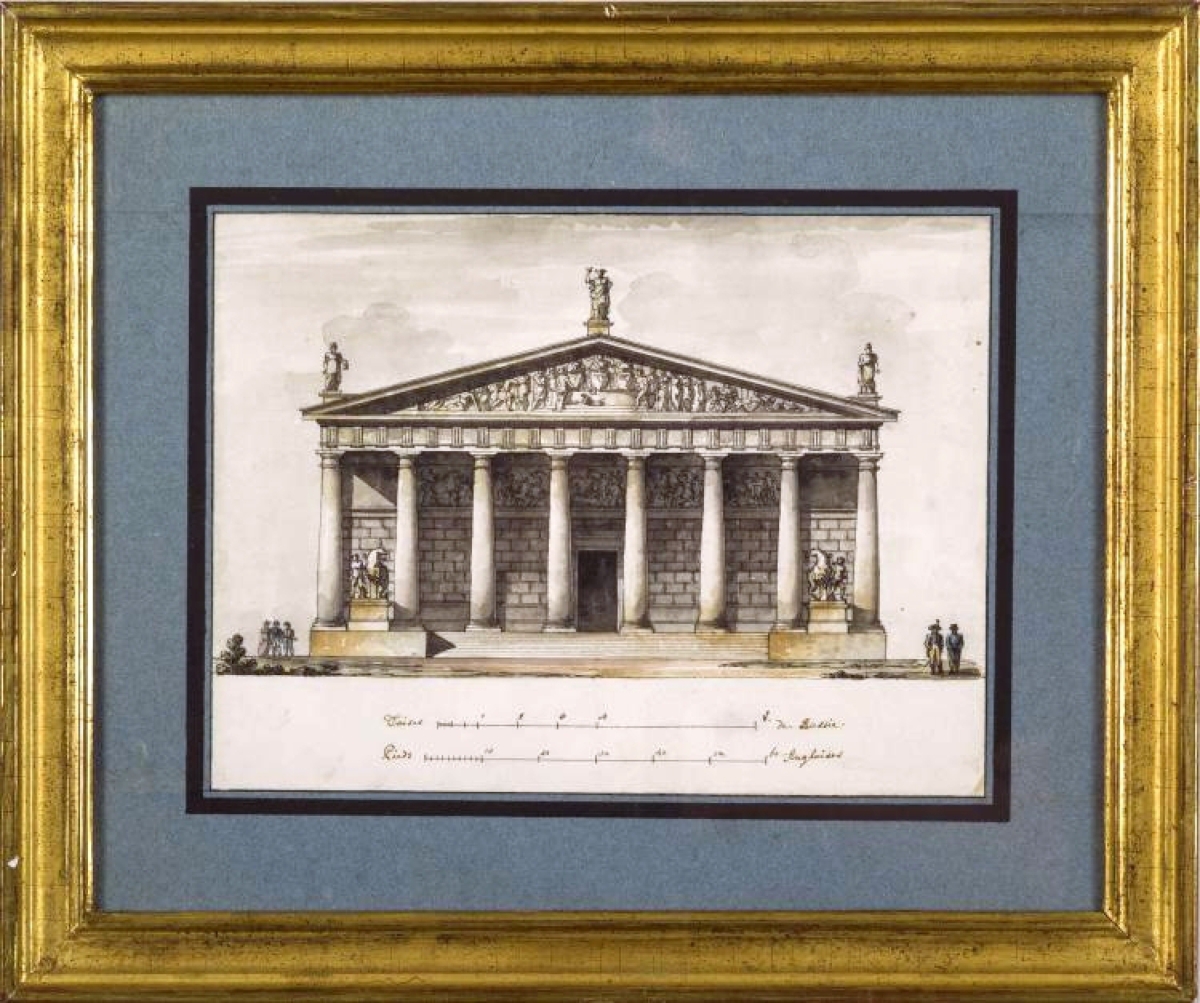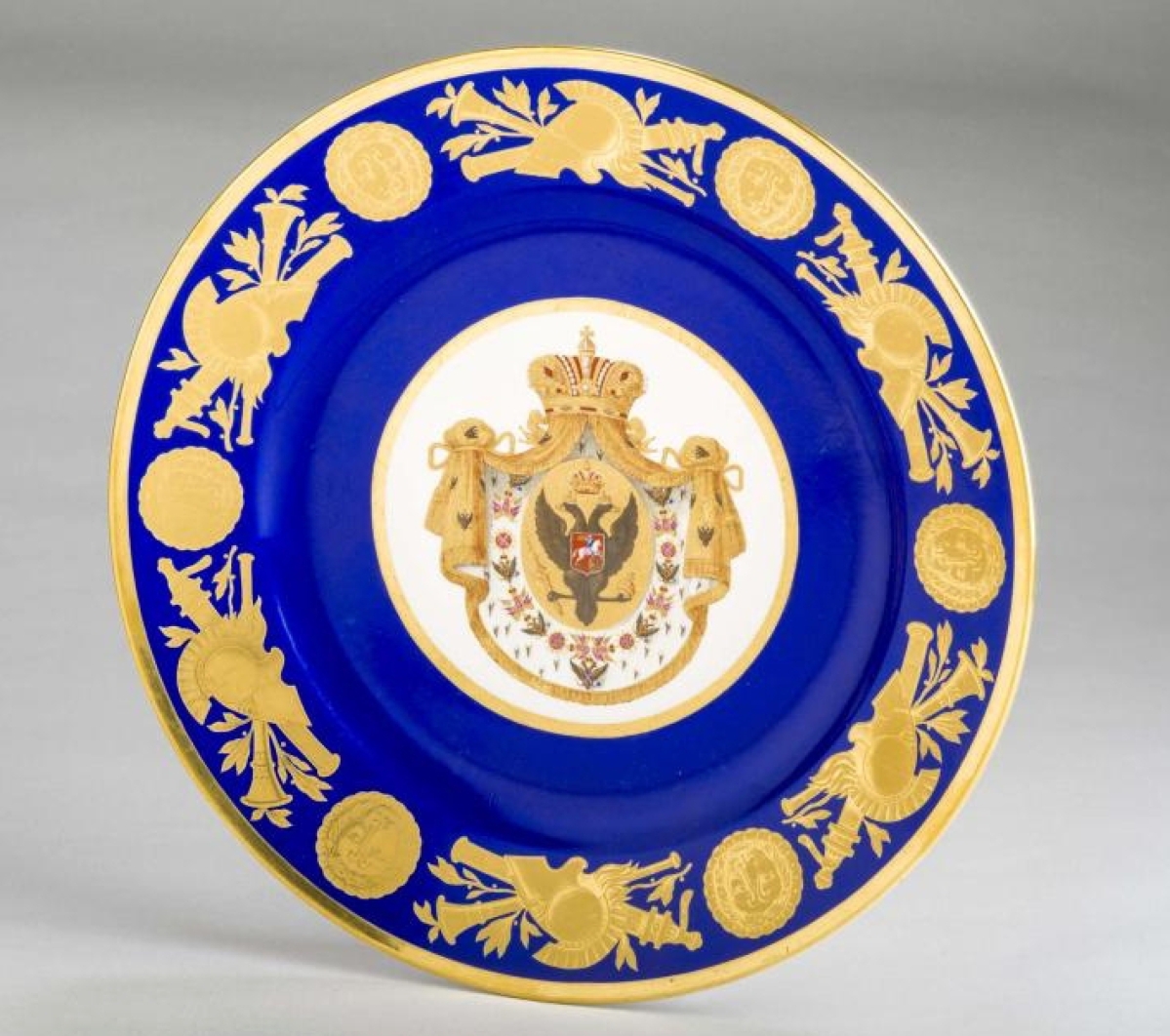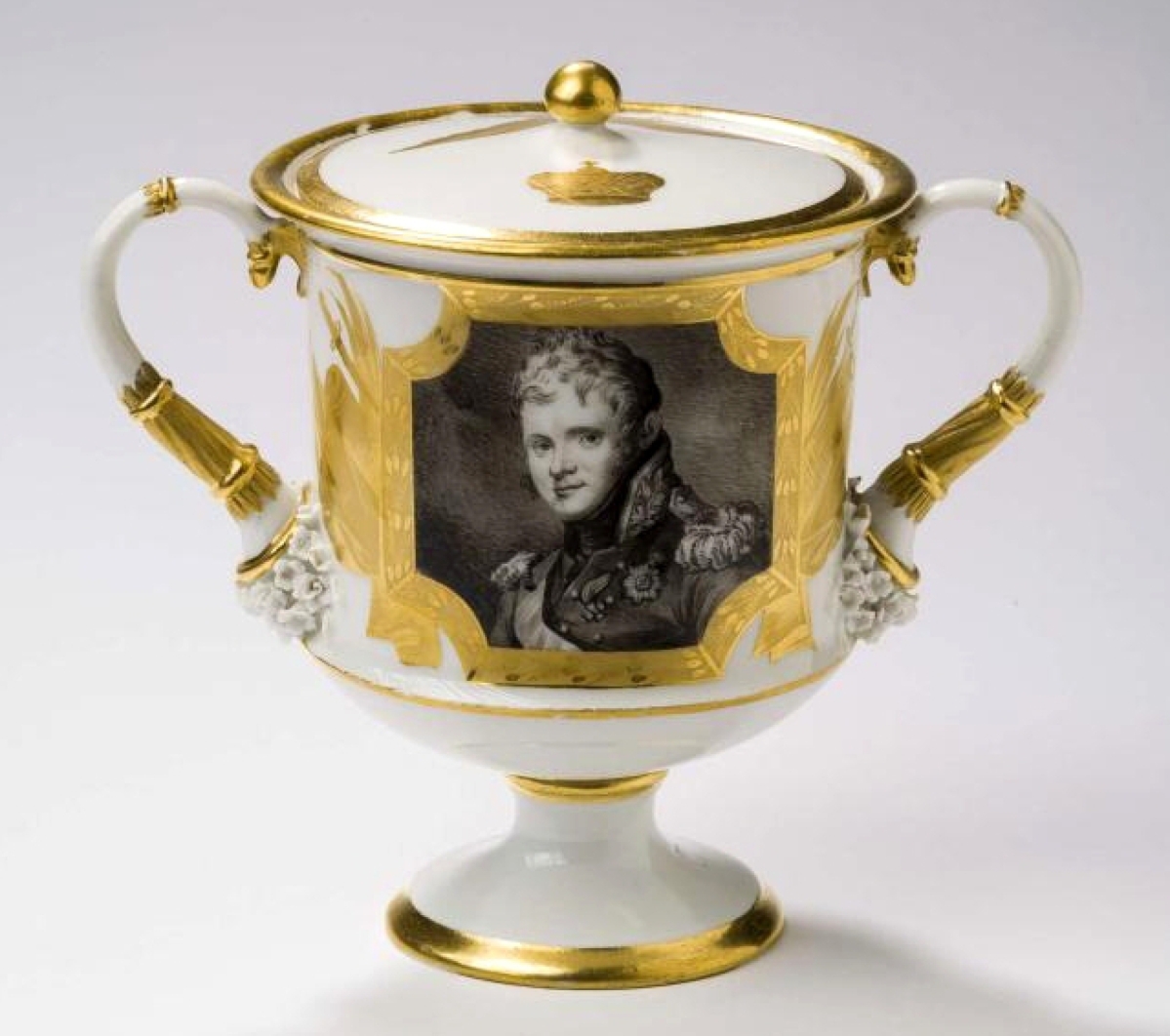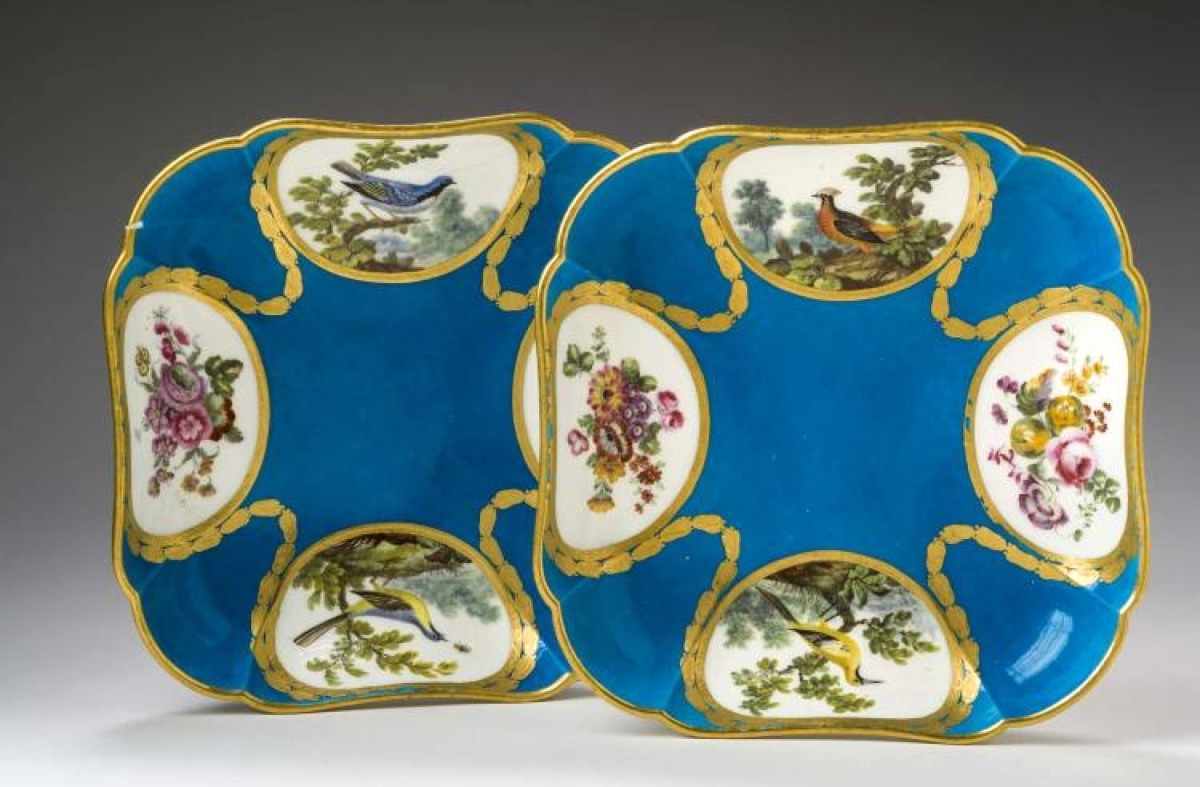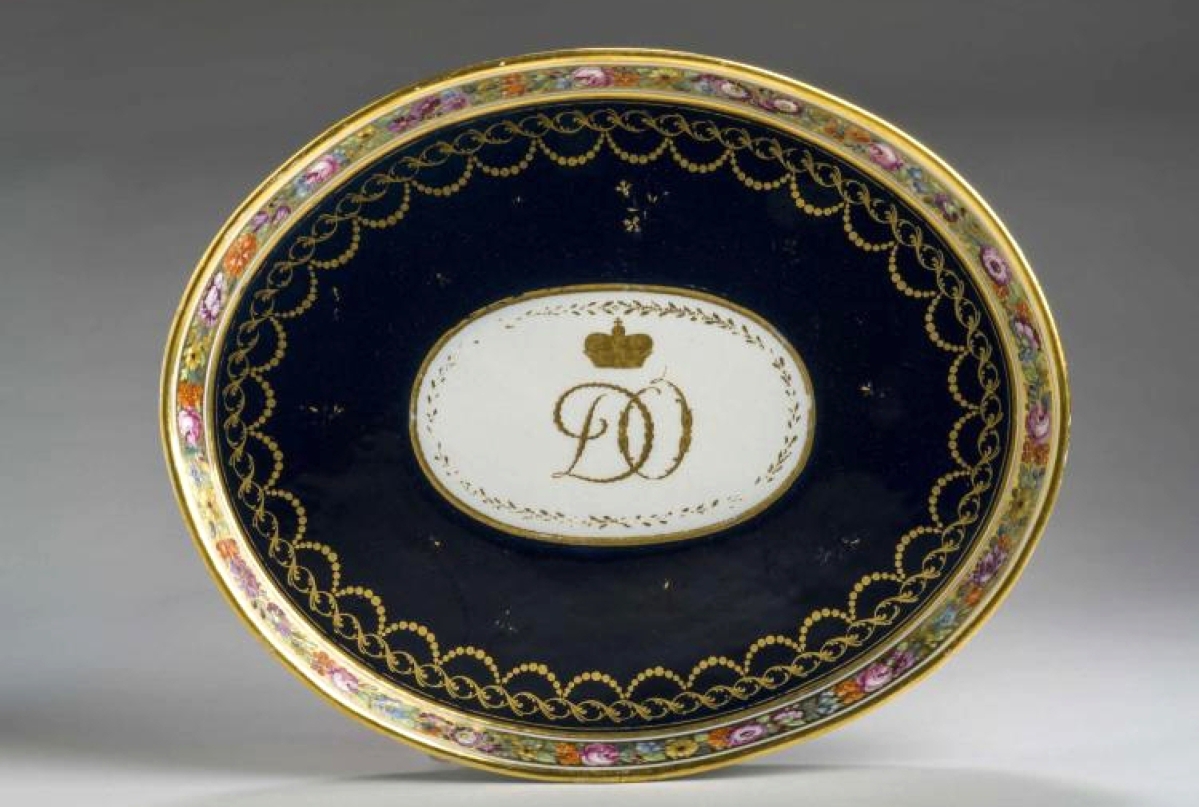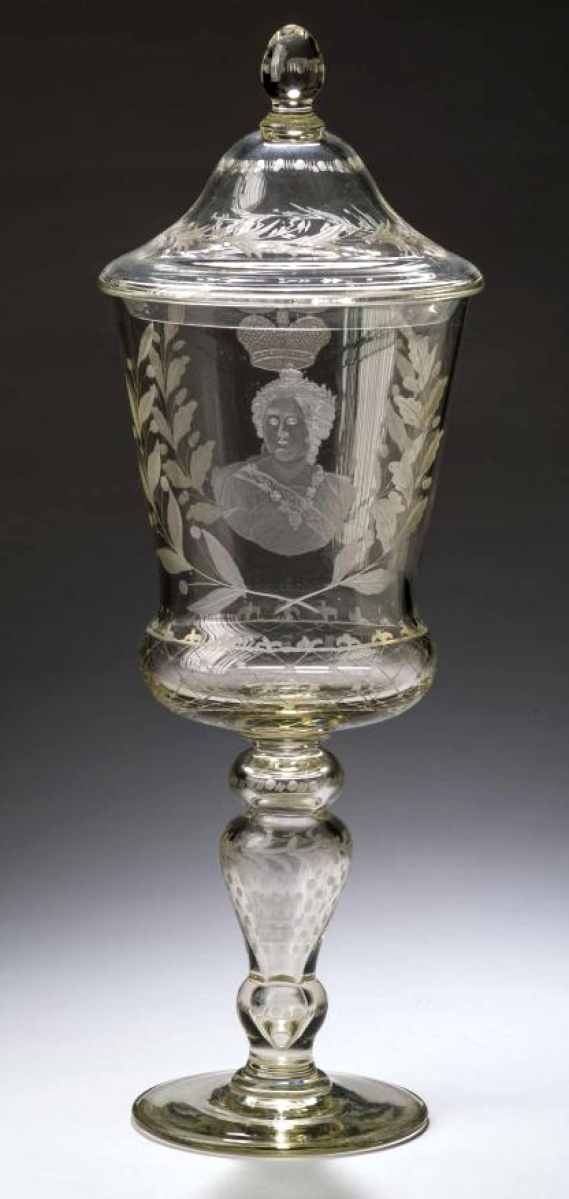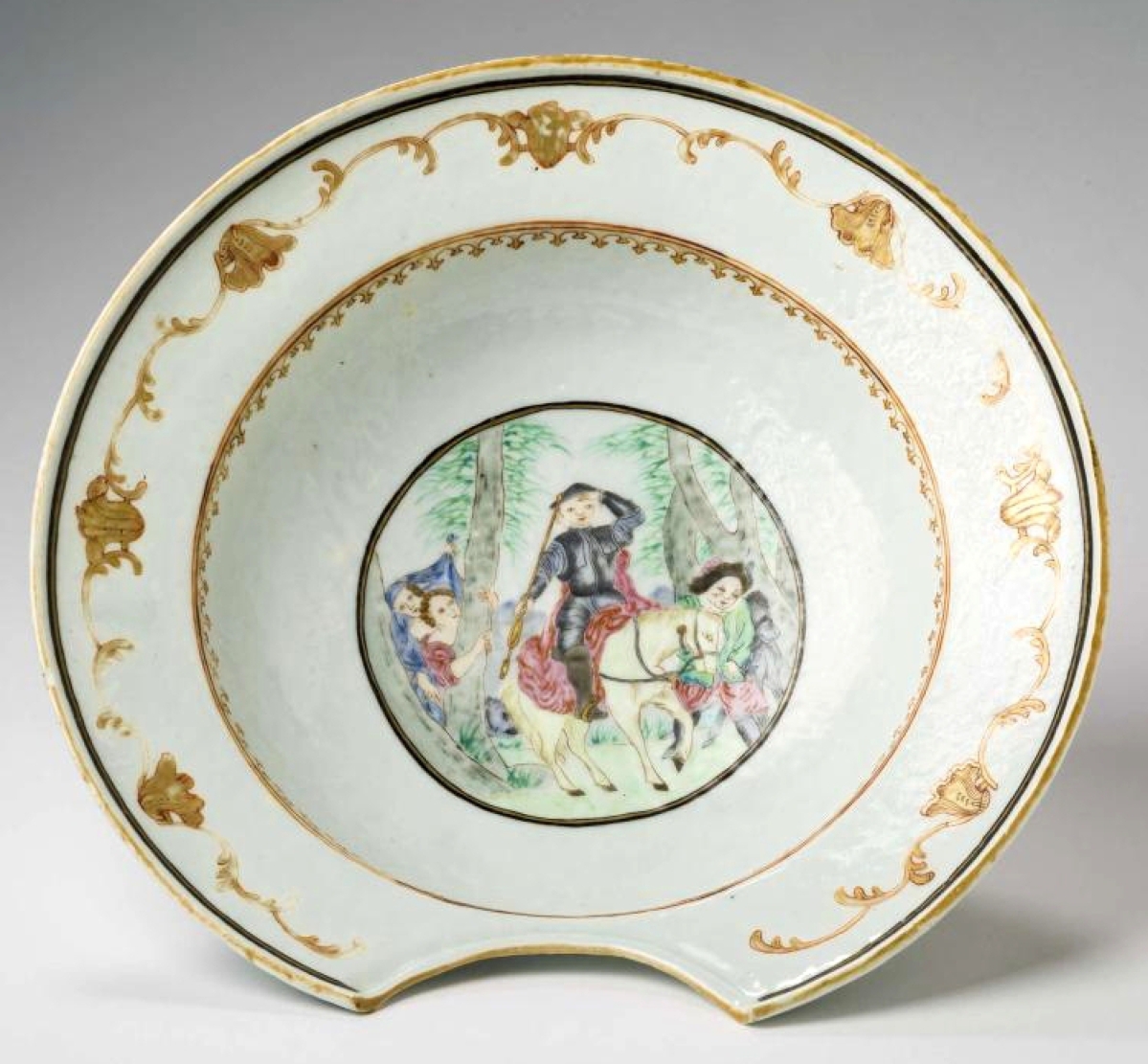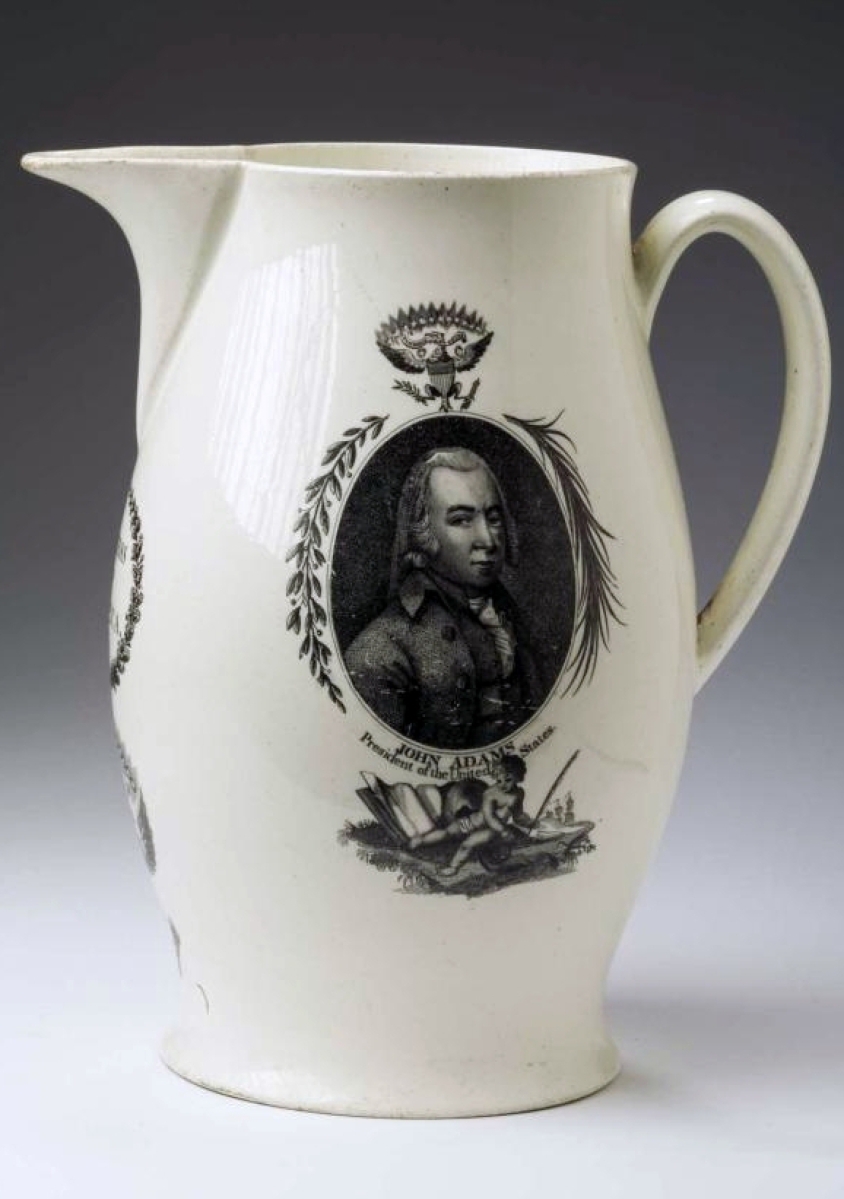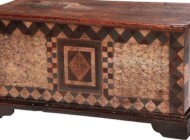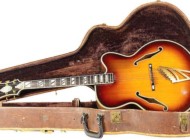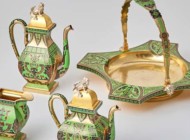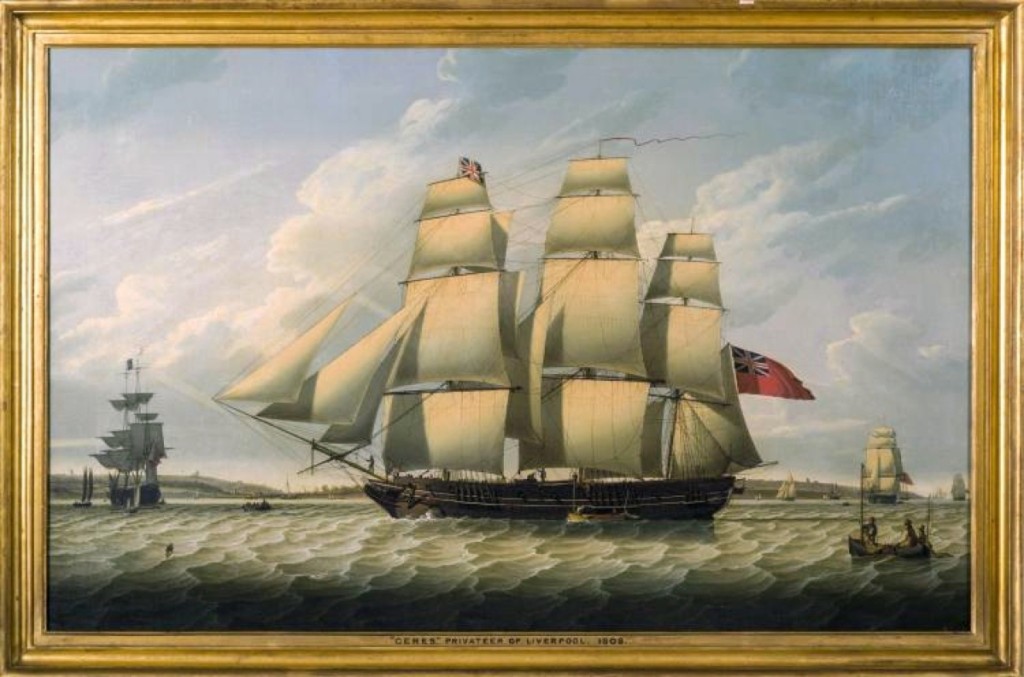
Going out at $48,000, Robert Salmon’s 1808 portrait of the Liverpool privateer Ceres was the highest priced item in the sale. It had been shown in at least two museum exhibitions.
Review and Onsite Photos by Rick Russack, Additional Photos Courtesy of Northeast Auctions
PORTSMOUTH, N.H. – Ron Bourgeault is known for selling good American furniture, folk art, China Trade items, paintings and more. He’s not known for selling imperial Russian porcelain, but that’s what he did at his April 7-8 auction – and did it successfully. The sale included a 40-year collection of Russian porcelain, glass and other items, 170 lots in all, much of it having been used by various members of the Russian royal family going back to the time of Peter the Great.
China Trade items included several landscapes and miniature paintings, export porcelains and furniture; there were numerous pieces of American furniture, folk art, mechanical banks, historical blue Staffordshire, spatterware, items relating to George Washington and more. There were some bargains to be had, while bidding was intense for other items. The salesroom was full on the first day, six phone lines were in use and internet bidders were active.
The highlight of the two-day sale was the collection of glass and porcelains used over a 235-year period in various palaces by members of the imperial Russian family, much of it made in state-owned Russian factories, related prints and drawings and other select Russian items. The cataloging of the items by longtime Northeast staff members Rebecca Davis and Monica Reuss was outstanding. In addition to fully describing each item and putting each in context, the catalog presented a concise history of the royal family.
Items were sold in chronological order, starting with items from the time of Peter the Great, who reigned from 1682 to 1725, and ending with items dating to the reign of Nicholas II, who abdicated in 1917. The sale was well-promoted, advertised both in the United States and Europe. The collection grossed $420,000, far in excess of the high estimate of $301,000. Many pieces went to phone bidders – some of whom found communicating in English challenging – and internet bidders, with several pieces sold to bidders in the room. Bourgeault later said that many items sold to American buyers.
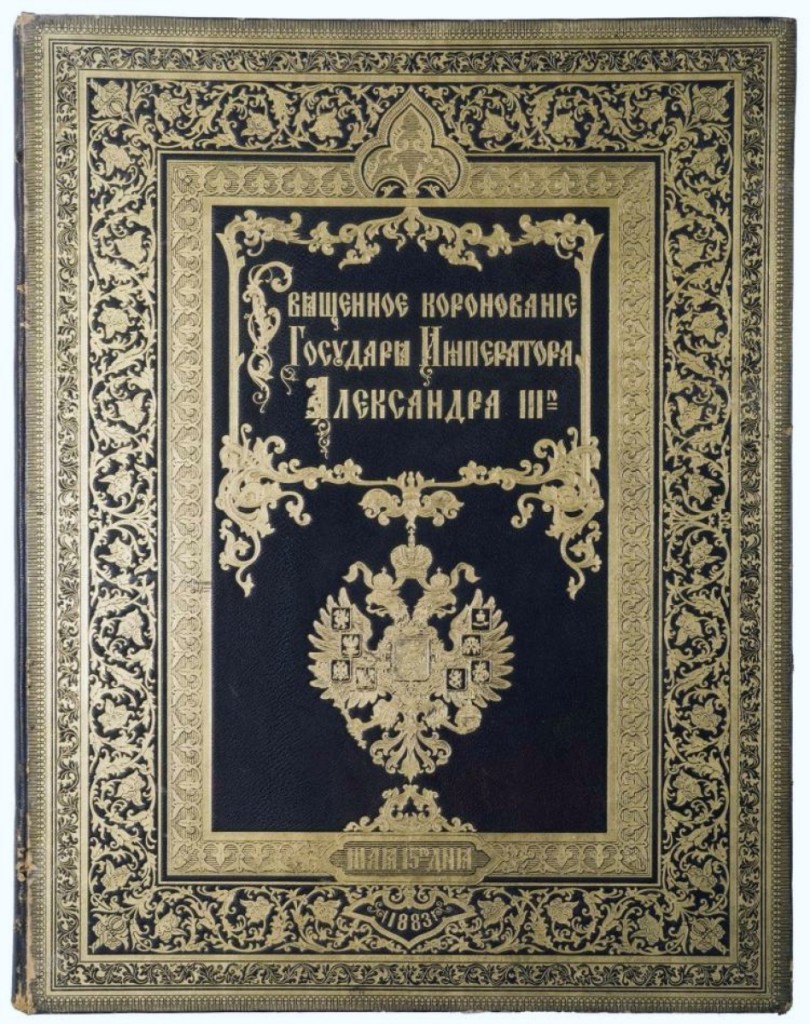
Distributed only to members of the royal family and foreign dignitaries, a copy of the coronation album prepared for Alexander III, 1883, included 65 pages and 23 oversized chromolithographs in an elaborate binding. It realized $36,000.
Topping the collection was an elaborately bound, oversized album of 23 chromolithographs describing and depicting events that took place in and around Moscow at the time of the coronation of Alexander II in 1883. The album, with Cyrillic text, had 65 pages and sold for $36,000 against a high estimate of $6,000. It went to an American buyer and will remain in the United States.
A 10-inch plate from the personal service of Elizabeth I, who reigned from 1741 to 1762, brought $6,600. She was a daughter of Peter the Great and led Russia through two wars, the War of the Austrian Succession and the Seven Years War. By her order, she created the first Russian porcelain manufactory in 1744, and it is believed that this plate was from the first service created by the factory.
Items relating to Catherine the Great, who reigned from 1762 to 1796, were among the most sought-after. A tall, colorless covered glass goblet, engraved with a portrait of Catherine on one side and with the imperial crown below her cypher on the other, sold for $12,000, nearly four times the estimate. It was believed to have been made by the Imperial Glass Factory, St Petersburg, between 1780 and 1800. Catherine commissioned several dinner services during her reign, including two of Chinese export porcelain, two made by Josiah Wedgwood and a Sevres service.
This sale included a 9þ-inch Chinese export plate with the arms of Russia, ordered by Catherine, circa 1785. It realized $3,300. A 13-inch oval tray made by the Imperial Porcelain Manufactory for Catherine, circa 1790, with her cypher in underglaze blue, reached $3,120. A pair of square turquoise dessert dishes, decorated with birds and flowers, from her Sevres service, circa 1768, earned $12,000 in spite of one plate being cracked. An oil painting depicting Emperor Peter III and his consort, Catherine, at a court reception bought $10,200. The unpopular Peter reigned for only six months until he was deposed by Catherine.
Items belonging to the ill-fated Czar Nicholas II were also sought-after by bidders. He was the last Russian czar, forced to abdicate in 1917 at the time of the Bolshevik Revolution. He and his entire family were murdered in 1918, although there were rumors that two of his daughters survived. A painted dinner plate with the cypher of Nicholas II, made by the Imperial Porcelain Manufactory and dated 1902, sold for $1,200. A plate used on the imperial yacht The Standart with Nicholas’ cypher and the 1902 date sold for $1,440. Two advanced collectors of Russian imperial items from New Jersey bought several items at the sale.
A few days after the sale, with the family’s permission, Bourgeault provided some information on the collection and how he came to sell it. The story actually goes back more than 100 years ago, to his grandfather’s time. The collection had been assembled by Andrew Paneyko, who died last year at the age of 80. Paneyko’s father, Mirko, had been born in Russia, where his father, Basil, had served as foreign minister of the short-lived Ukrainian Republic following the Bolshevik Revolution. So, Andrew Paneyko’s interest in Russian imperial belongings was a result of the family background. He worked for Alistair Stair in London and Ginsberg and Levy in New York.
As fate would have it, Paneyko’s first wife was a member of the Lanes, a prominent Hampton, N.H., family, which is where Ron Bourgeault grew up. Bourgeault’s grandfather was a doctor in the town and a close friend of the Lane family. When Andrew Paneyko visited with his wife’s family, he became friendly with Bourgeault, who at the time was too young to drive, so the two visited antiques shops together. Bourgeault has often commented that success in his business depends on relationships developed over the years, and this story certainly shows that to be true.
The Russian items comprised only 170 of the 773 lots in the sale. The highest priced item in the sale was a portrait of the privateer Ceres of Liverpool, signed with initials by Robert Salmon (1775-circa 1848), dated 1802, which brought $48,000. It’s a well-known painting, having been exhibited at Boston’s Museum of Fine Arts, and it is illustrated in a catalog of the museum’s American paintings.
American furniture offerings included a Queen Anne maple and walnut highboy, circa 1765, that had descended in the Orne family of Marblehead, Mass. It was bought by Steve Orne, vice president of rum distillery Rumson’s. It finished at $13,200, well over the estimate, and will remain in the family. Another Orne family piece that did well was a Queen Anne oval drop leaf dining table that sold for $4,320.
A Massachusetts Chippendale mahogany block front desk, circa 1770-90, which had remained in the Bliss and Binney families until 2001, achieved $10,200. Bringing more than twice the estimate was a Philadelphia Chippendale tall case clock with works inscribed by Joseph Wills, which ended up at $8,880. As happens these days, there were bargains to be had. Selling for a very affordable $780 was a Pennsylvania painted and decorated dower chest.
One of the surprises of the first day was a copy of Izaak Walton’s The Compleat Angler in an exceptional Riviere and Sons binding with three painted oval panels on the front and back covers, each depicting fish in landscapes. With overall gilt tooled floral and lily pad decoration, the book sold for $5,280.
A large selection of historical blue Staffordshire included an Enoch Wood shell border vegetable dish depicting the Yarmouth, Isle of Wight, which sold for $2,160. The first day also included a group of mechanical banks from the collection of Patricia Sax. There were no extremely rare banks, but it was a nice selection and overall condition was good. The Chief Big Moon bank, made by the Stevens Company brought $1,320, and an Uncle Sam bank by the Shepard Hardware Company finished at $1,140.
Bourgeault said he was pleased with sale. “We had a good crowd in the room and it was nice to see that some families are bringing children with them. That’s the way to get them started. A lot of the Russian material was bought by American collectors. I’d thought more would go overseas but the Americans outbid the others. Brown furniture remains affordable, but there’s certainly strength returning. We also did well with historical American items, like maps, and American silver. All in all – a good sale.”
Prices quoted include buyer’s premium. Internet surcharge, where applicable, not included. For information, 603-433-8400 or www.northeastauctions.com.

